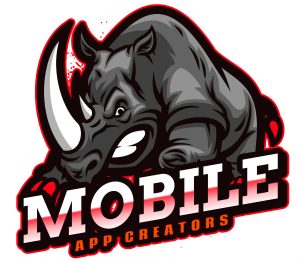For many app developers, App Monetization, can become a tremendous additional stream of income. Done right, app monetization could become mainstream income. Many app developers are quietly making a killing by monetizing their apps versus selling them.
If you are one of those passionate and gifted developers who can create their own magical or amazing worlds thru mobile applications, you are probably looking for ways to generate revenue from your work.
Well, there are actually lots of options out there. You just have to decide which one suits your mobile app perfectly.
As you can imagine, Apple and Google have millions of subscribers each.
As a mobile app creator, you want to earn money through your app. The idea of earning money from your app is exciting, however, doing it so is not that easy.
Similar to other business strategies, you must know which is the best monetization strategy to use to create a passive income
Different Methods of App Monetization
You will find below the common ways to make your app generate revenue. As you read this article, you will learn which is the perfect strategy for your app.
Earn Thru Advertisements
If you notice when you use some apps like a game app, there are advertisements that suddenly appear on your screen. That is because some apps earn from these advertisements.
But usually, advertising goes along with another strategy called Freemium Service. (See meaning below)
This model allows the user to download the app and access its content with no cost. However, if you plan to apply this strategy, you will need numerous active users to earn substantially.
It delivers great results when:
- You plan to monetize from your app, not from users
- If users will often use the app for hours because of its nature
- If you gather data about population structure or behavioral analytics
- The user will not be able to use other features of the app unless it's purchased
If you decide to generate revenue from advertisements, the ads MUST be in good quality, connected and intended for your users. Otherwise, your advertisements can affect your user’s interest in your app.
5 types of In-App Advertisements:
This advertisement format will appear on the users’ mobile screen as they open the application.
This type of ads is dependable because aside from occupying the whole screen with an ad, it also needs a response either to close the ad or proceed with the ad.
However, you have to know the appropriate time and number of appearances when using interstitial ads.
When too many ads appear on the screen or if it frequently interrupts the user’s experience, the user can be exasperated.
Most often, when users see this ad, they often see it as a form of scam. Y
ou will find this advertisement either on the top or at the bottom of your screen. Users usually don’t like it, but this format may come in handy.
It is important to personalize or make your ad creative if you plan to use this format.
To prevent creating a negative impression to the users, high quality and relative banner ad must be displayed.
Based on its name, more than one advertiser is being promoted at once. It prompts the user multiple options to download different apps.
Multimedia banners or also known as rich media banners uses HTML5 technology, which allows the ad to display several multimedia content all at once.
This includes interactive videos, music, games, social media components etc. Rich media banners can be personalized and customized based on your preferred design.
If you have seen how chameleons adapt to its environment, you will understand how Native ads work.
This type of in-app advertisement blends in with the appearance and platform of the application. These ads are usually seen as if it’s part of the different social media feeds like Facebook or it looks like just another content of the application.
In-App Purchases
Many game apps use this strategy to generate revenue. It allows the user to purchase items that can be used to level up their experience.
Do you need some examples? If you are familiar or an actual user of game applications like Candy Crush, Mobile Legends, Clash of Clans, at some point, you will run out of lives or coins.
This is where In-app purchases enter as the app will offer you to purchase lives or coins to continue playing. Users can also upgrade their game characters thru this model.
In-app purchases are not only used by game apps but also in other applications like Amazon and Uber apps where you can buy credits to purchase any items or top up your credits for cashless transactions.
It can work best when:
- The users get actual value from the in-app purchases
- The nature of your app is either for gaming, online shopping or providing services
- It’s more convenient for the users which make them use the more often
- Regardless of the percentage taken by Google and Apple from downloads and in-app purchases, you still get extra earnings
In today’s economy, multiple streams of income are the way to go! For app developers, app monetization is a phenomenal way to join the ranks high income earners.
Pay Per Download
Compared to advertisement-based format, Pay Per Download requires the user to pay in order to download the application.
Although it generates income based on the number of downloads, this doesn’t make the format the top income-generating revenue.
One good reason for that is because a possible user will not pay unless they find your app as something they really need, or if they have a good reason to buy your app.
Your app’s chances to be downloaded are low especially when many similar apps are available for free.
Your application must have a great application status, high popularity rate, outstanding feedbacks from the users, and a unique presentation of your app’s advantages to other free applications with similar function.
Moreover, this model does not surpass the lifetime value of other monetization strategies.
It provides excellent results when:
- Your app is in demand, meaning many people are downloading it
- If your app can highlight its advantages to other free similar applications
- If you have a powerful marketing strategy
- If the users are willing to pay and if they get what they pay for
Freemium App Monetization
Have you ever downloaded an app that looks like it’s free but gives you limited access to its features?
That kind of apps uses the freemium app monetization model.
Nowadays, it is commonly used together with advertisements to attract potential users.
They let the users experience the app first until they get so curious about what else can the app do and finally lead them to purchase its premium features.
However, the downside of this model is that it is hard to decide whether to give very limited access or the other way around.
In order to generate substantial income using a freemium app, it should establish a strong engagement to its users.
Freemium app establishes trust as it exhibits quality and worth without expecting anything in return and that is what makes these apps more effective than the others.
It gives great results when:
- You have a numerous and an ever growing active user base
- You expect to earn both from users and advertisements
- The premium features can deliver desirable worth
- The free version can catch users attention and is appealing enough to convince users to purchase
- Your app can drive its users to stay on the app for a longer time

Subscriptions App Monetization
This model works almost the same as the freemium, the difference is that subscription based app monetization limits the user to the app’s content instead of its features.
For example, you want to watch movies on your mobile phone so you downloaded the Netflix application.
Downloading the app is free, however, you will only be able to access the movies if you subscribed on Netflix. Some apps may offer a free trial before they are asked to subscribe.
It generates a passive income compared to other models but just like the freemium model, deciding on the number of features a user can access is kinda tricky.
Its results can be great when:
- Your app contains music, videos, movies, etc.
- Your app makes your user want more of your content
Deciding On Which Monetizing Strategy Suits Your App
There are many different factors that you need to consider when deciding on which monetizing format is best for your app. However, you have to layout your strategy right before you launch your application.
Your monetization strategy will depend on the objectives of your app. Below are some pointers that you have to consider when planning your strategy to earn money from your mobile application.
Decide On What Application You Want To Develop
Decide On What Application You Want To Develop
The very first step is to decide what can your app do. Can it address specific issues? What issues does it address? How does it address the issue?
What is its purpose? Is it a game app, an online shopping app, weight loss app, transportation app, etc?
As mentioned above, the models can be applied depending on the nature of the apps.
To set an example, in-app purchases work best for; game application, online shopping apps, service apps and other apps that sell both physical and virtual items that users can use either in real life or on the app itself.
Look at the Competition
In creating an application, your first strategy is to perform research about applications that works similar to your intended product.
The things to note during your research are, what makes your competitors generate money? What monetizing strategies do they use and do they work well?
Do you see any missing features that can you can use as an advantage? How can you make your app stand out among the rest to attract users and generate recurring income?
Who Is Your Target Market?
In every other business, studying your target market is always part of the business strategy.
That means that you have to know more about your target users to make an effective decision in selecting the right monetization model for your mobile application.
In user research, you have to know who your target users are, what they need and most of all, what things are they willing to purchase? You have to demonstrate the value of your app to convince your potential users to make purchases.
If apps use pay per download strategy, they must exhibit great undeniable value before making any purchase. On the other hand, free download apps must provide exceptional experience or convenience to the users.
Be advised that whatever type of mobile app monetization strategy you use for your product, you must make the plan before you launch your application.
What you want to achieve is to generate income or recurring income with the help of the appropriate monetization strategy.
If your app is ready to be developed, the first thing to do is to understand what appropriate strategy should you use for app monetization . Generating income to make your business grow and last longer is just one aspect of the whole project.
To see if you have completed all the steps, check out and download our checklist for mobile app development. You can use the list to assess development preparedness.






